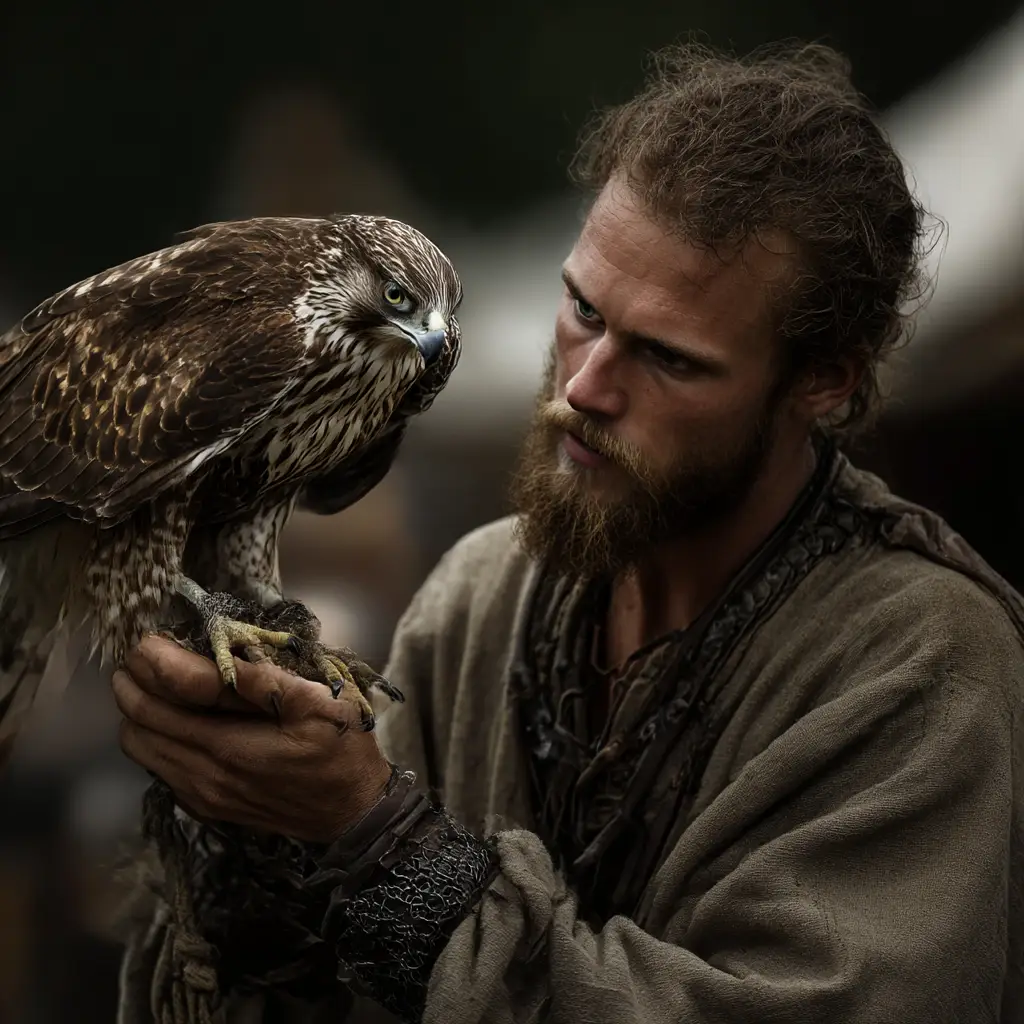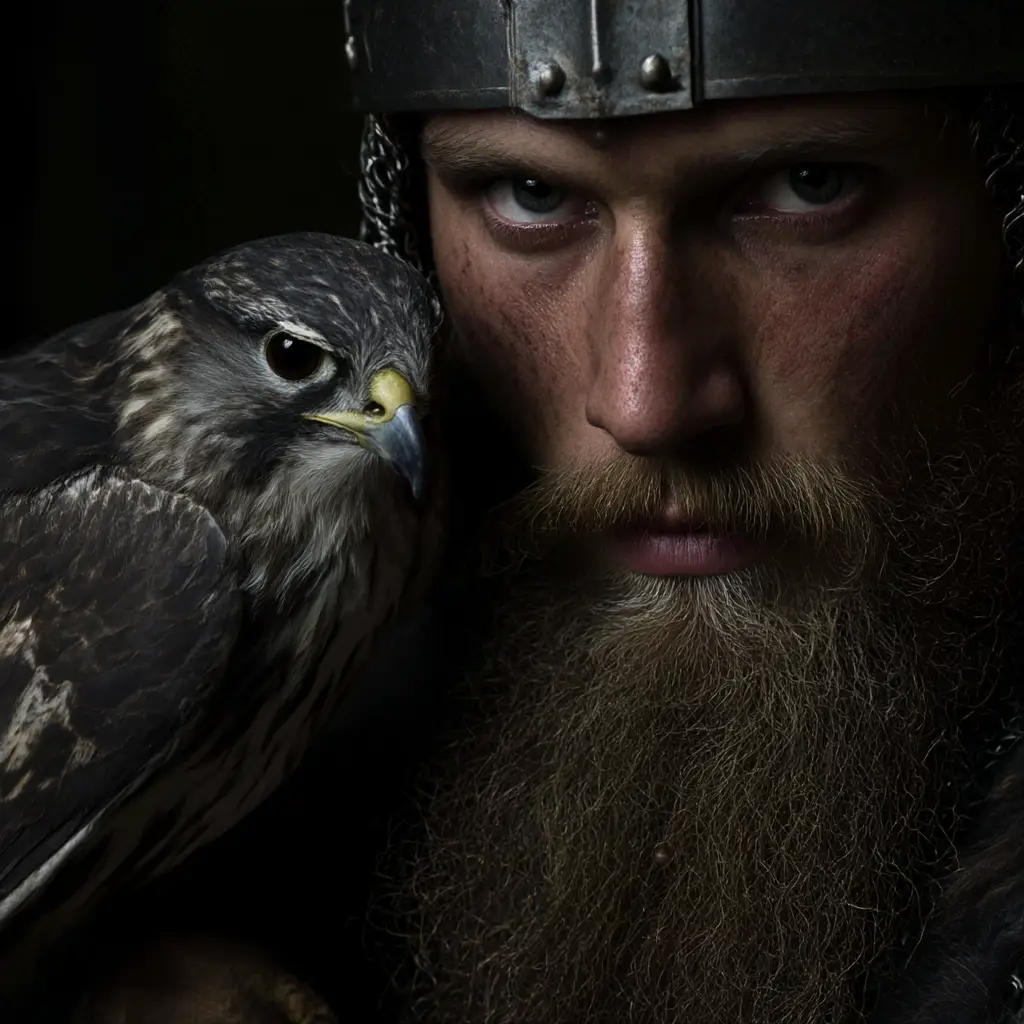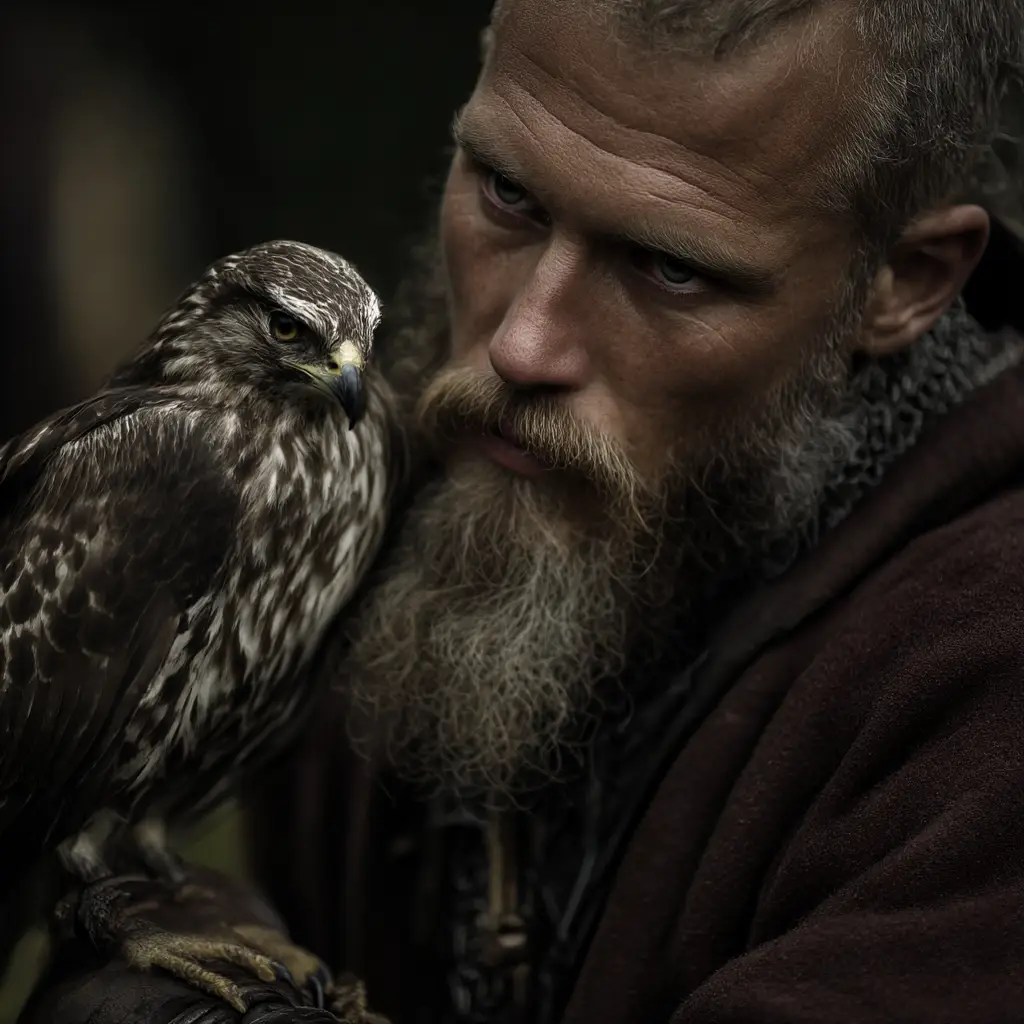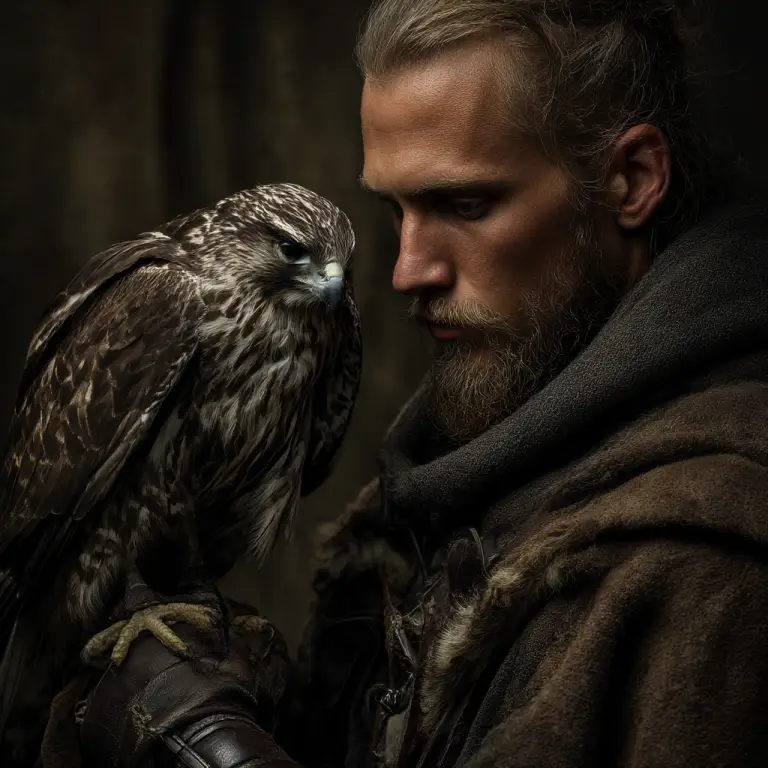Vikings and Falconry
Falconry, the practice of training birds of prey to hunt, is often associated with medieval Europe and the Middle East, but it also had a place in the world of the Vikings. While not as widespread among common people, falconry was a prestigious activity linked to nobility and the elite across Scandinavia during the Viking Age.
Falconry in Viking Society
Viking chieftains and kings valued falconry both as a symbol of status and as a practical means of hunting. Falcons and hawks were seen as rare and valuable, often reserved for the wealthy. The presence of trained birds of prey at a feast or gathering would signal power, wealth, and connection to international trade networks.
Trade and Prestige
Vikings were highly skilled traders and explorers, and they acquired exotic birds such as gyrfalcons and peregrine falcons through trade with Arctic regions, the British Isles, and even the Middle East. The white gyrfalcon, native to Arctic areas like Iceland and Greenland, was especially prized and sometimes presented as a diplomatic gift to European rulers.
Evidence from Viking burial sites, such as those at Birka in Sweden, has revealed falconry equipment like jesses (leg straps), bells, and falcon hoods, highlighting the importance of these birds in elite Viking circles.
Cultural and Symbolic Importance
In Norse mythology and art, birds of prey held symbolic meaning. The god Odin was closely associated with ravens, which served as his eyes and ears, but the sight of falcons and hawks also carried connotations of sharpness, freedom, and power. Some Viking Age jewelry and carvings depict birds of prey, reflecting their respected place in the culture.
Hunting and Practical Use
Falconry was not just a display of wealth — it had practical uses in Viking life. Falcons were trained to hunt small game, such as hares and birds, supplementing the diet of noble households. The skill of training and handling a raptor was highly respected, requiring patience, precision, and deep knowledge of the bird’s behaviour.
Legacy and Influence
Although falconry declined in Scandinavia after the Christianisation of the region and the fall of Viking power, it left its mark on medieval Scandinavian nobility. Today, the history of Vikings and falconry continues to inspire interest, with reconstructed equipment, historical reenactments, and research into old Norse falconry practices drawing attention from enthusiasts and scholars alike.



